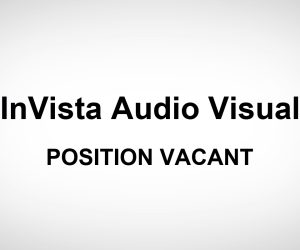
Termination: The Fifteen Minute Rule
The Fifteen Minute Rule.
Text:/ Matt Caton
Most of us have been seduced, at some stage, by the drawing power of the excessive home entertainment centre. You know the power. You possibly first noticed it when you installed it in a client’s boardroom. Maybe you notice it every time you set up a concert. You’ve certainly noticed it when you’ve walked into somebody’s house and spotted the massive ‘infinity inch’ plasma / LCD / LED, often accompanied by a world class ‘drum n bass’ sound system and a full reclining cinema chair. It’s enough to incite levels of jealousy that will see even the most discerning budget-watcher go out and buy their own.
So you’ve now gone and bought your own version of the ‘perfect’ home cinema. You sit down, start watching the movie, and for the first 15 minutes, it’s pure heaven. But then something happens. Something so complex that it far outreaches the capabilities of this writer to accurately describe it. Your senses begin to adapt, it becomes your new ‘norm,’ and suddenly the massive screen and crystal picture quality doesn’t seem that impressive anymore.
This phenomenon is often referred to in scientific circles as the ‘Fifteen Minute Rule.’ (It should be noted that this is in no way true, and the Fifteen Minute Rule is something I just made up along the way, but please indulge me.) No matter what the visual feast being delivered to you is, after about 15 minutes, you become so immersed and so ‘used to’ it, that it becomes irrelevant to you.
AT THE MOVIES
Now think about about this; how many Hollywood blockbuster films have you seen where the filmmaker attempted to wow you for two hours with nothing but special effects? Usually, these films are created by Michael Bay, and sadly even the occasional one from James Cameron. The introduction sequence blows you away and for the first fifteen minutes, you can’t take your eyes off the stunning effects. It doesn’t really carry the movie all the way through though, does it?
It also goes the other way. If you watch a movie with subtitles, or in black and white, or with a grainy picture (from the DVD your sister brought back from Bali), the first fifteen minutes are somewhat excruciating. You begin to question how you are going to make it all the way through, and furthermore, question why you would want to. But after a non-specific measurement of time (lets just say, fifteen minutes), you begin to get used to this visual and eventually you don’t even realise that you are reading subtitles or haven’t seen a single RGB pixel for almost two hours.
WHAT’S GOOD FOR THE EYE…
How does this fifteen minute rule apply to sound? Essentially, it doesn’t. Sound works on a totally different cosmic level that I’m far too unqualified to write about. While it is true that you can become immersed in sound, you never casn never ignore it when it’s too loud or of poor quality. One of the most common tips given to independent filmmakers, is to spend most of your budget on sound; as people will forgive a grainy picture, but people never forgive poor sound. And I’m sure I don’t need to sell anybody reading this magazine on that point.
GOTTA HAVE SUBSTANCE
This of course does not mean that a stunning visual has no place; far from it. It just needs to be accompanied by something of substance. If your show / movie / event / presentation is able to keep the audience’s attention, then your visuals will hit their mark even greater. If your visuals are expected to carry the entire event, you wanna hope it doesn’t run any longer than fifteen minutes.
In my time writing for AV Magazine, the most impressive spectacle I have been lucky enough to witness was the Audio Visual set design for the Melbourne production of Hairspray. The LED screens gave creation to the most visually excitable thing I’ve seen on a theatre stage, yet the production had enough substance to keep my attention well after I stopped swooning over the set. It was probably the most obvious, real and tangible example of the fifteen minute rule I’ve experienced first hand. The visuals blew me away, but the substance of the production made the overall experience so much more memorable and because of that, I still have vivid memories of the visuals.
So the next time you are about to deck out your cinema room, or are deciding between the 50 inch and the 55 inch television, or are trying to spruce up your client’s shareholder meeting, keep these tips in mind:
– It is possible to use A/V to ‘polish a turd’ (as they say), but it can only be polished for about fifteen minutes.
– If your show is a turd… make sure the sound isn’t shit.















RESPONSES